Louisiana, like the rest of the South, has a long history of wealthy white men banding together to influence state and local politics, donating individually and collectively to trade groups and candidates for elected offices. Once they were called “citizens’ councils”, and were aligned with the Dixiecrats. Now, they form non-profit “grassroots” organizations, set up political action committees (PACs), and are active within the Louisiana Association of Business and Industry (LABI), and the Republican Party.

The latest gang seeking to dominate and control state government and policies are those we are calling the “Erector Set”.
Each of them has built his own multi-million-dollar company, through building industrial facilities for other multi-million-dollar companies. These men are used to running things and getting their own way. And they have friends who think like they do.
The mastermind of the current Baton Rouge-based triumvirate is Lane Grigsby, Chairman of the Board of Cajun Contractors, and Chairman Emeritus for the LABI Board of Directors.
Grigsby’s longtime friend and ally is Eddie Rispone, the founder and chairman of ISC Constructors, who is now running for Governor of Louisiana. Grigsby and Rispone have been working together to influence local and statewide political races and issues for nearly a decade.
The most recent addition to this cabal is Art Favre, founder and president of Performance Contractors, a company with 2017 annual revenue in excess of $1.5-billion. Favre “joined” the Erector Set early in 2018.
These three men are involved in many of the same interest groups: LABI, Associated Builders and Contractors (ABC), supporting LSU’s College of Engineering (of which they are all alumni), and, in the case of Rispone and Favre particularly, involvement in Catholic charities and fundraising for Our Lady of the Lake.
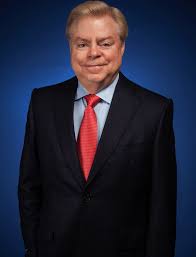
Favre started Performance Contractors in 1979, and had generally been considered a “philanthropic” corporate citizen until recently. Certainly, he invested his wealth in a variety of projects, including purchasing the majority interest in The Wharf at Orange Beach, Alabama, in December 2011. The development, which was in foreclosure, cost him a reported $14-million.
He has served on the Federal Reserve Board, and as director for Mary Bird Perkins Cancer Center at Our Lady of the Lake Hospital. He also donated $1-million toward construction of the new Children’s Hospital at OLOL. Additionally, he endowed the chairman professorship for LSU’s construction management program, for $1.2-million.
Up until the past couple of years, Favre was not one who could be classified as a “substantial” political donor. Although he – but more usually his company – contributed to campaigns and PACs, like LABI’s and ABC’s, it was always in relatively modest amounts.
In 2016, he put $58,000 into Eddie Rispone’s Citizens For A Better Baton Rouge PAC, which ran ads supporting Bodi White and opposing Sharon Weston-Broome in the Baton Rouge mayor’s race. Weston-Broome won that contest.
In 2017, Favre served as chairman of LABI’s Board of Directors. That threw him into close alliance with LABI’s chairman emeritus, Lane Grigsby. Prior to that, Favre had a pattern of giving $50 per year to each of LABI’s four regional PACs (East PAC, West PAC, North PAC, South PAC). But in April 2018, he put $25,000 into each of those funds – donated under his company’s name.
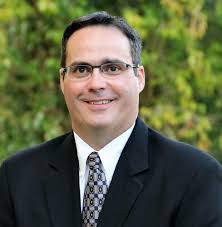
That same month, he personally put $100,000 into the LA Free Enterprise PAC, which Lane Grigsby had seeded with another $100,000 one month prior. The fund is managed by John Diez, president of Magellan Strategies, a research and polling firm based in Baton Rouge. Diez also serves as LABI’s Director of Political Action Committees and of the super PAC, Louisiana Committee for a Republican Majority, which has now been renamed the Louisiana Conservative Majority PAC. (That’s the super PAC once controlled by David Vitter, who has since turned it and its work over to Louisiana Attorney General Jeff Landry.)
The Grigsby-Favre LA Free Enterpise PAC spent about $75,000 of its money in the fall of 2018. In addition to hosting “PAC strategy meetings” at Hooters (Baton Rouge twice, Metairie four times, West Bank three times, and Bossier City twice) the PAC spent on oppositional research and direct mailings to influence the Plaquemines Parish Council elections – hoping to impanel a council that would vote to permanently end the parish’s coastal lawsuits against the oil and gas industry.
The first of those lawsuits was settled last week, just prior to its scheduled trial start date.
The Great Grigsby
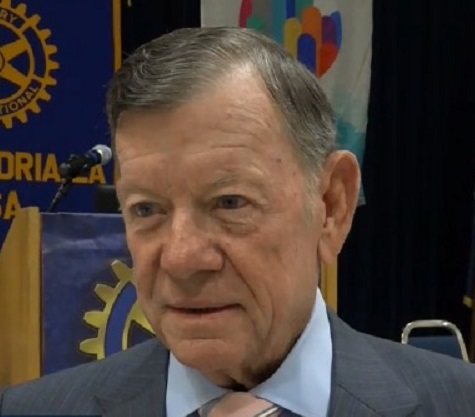
In 1973, Lane Grigsby founded what has become Cajun Industries – now with five divisions: Cajun Constructors, Cajun Industrial Design and Construction, Cajun Deep Foundations, Cajun Maritime, and Cajun Equipment Services. By 2016, the company’s total revenue was more than $721-million.
In 1976, Grigsby was one of the first to join the newly-formed Louisiana Association of Business and Industry, with its initial mission of getting the “Right to Work” law passed, and dismantle what then-head of LABI, Ed Steimel termed “uncontrolled and excessive political power of labor unions.”
(It should be noted that, in LABI’s arguments for passage of the “Right-to-Work” law, Steimel claimed Louisiana lagged behind the rest of the nation in job creation during the prior 8 years because of organized labor – neglecting to mention the effect Louisiana politicians’ hard-line stance in favor of segregation and against implementing Civil Rights.)
Distaste for labor unions has remained one of Grigsby’s core values. In 2014 and 2015, Grigsby was heavily involved in LABI’s push for the slyly named “Pay Check Protection” bill, which would prohibit governmental agencies from collecting and remitting workers’ union dues. LABI did internet broadcasts of these meetings for their members, and NOLA.com captured snippets from them, publishing Grigsby’s video commentary to YouTube. (Though they misidentify him in one clip as “Wayne” Grigsby)
“The impetus of it is to cut off the unions’ funding. They lose their stroke.” Grigsby explains. “This is a fatal spear to the heart of the giant, in truth.”
A second clip shows Grigsby stating, “Guys, this is where you grab the aorta, and shut it off. If you control the money flow, you control the success.”
While that bill failed to pass, there can be no doubt that Lane Grigsby controls plenty of money, and its flow to like-minded politicians and causes.
As one of the 1980 co-founders of Associated Builders and Contractors, he retains a lot of “stroke” with the organization, which operates two political action committees: ABC Merit PAC and ABC Pelican PAC (which is run by Thad Rispone), and which have each contributed hundreds of thousands of dollars to Louisiana candidates over the years. Interestingly, those regularly benefiting from the ABC PACs are either Republicans running for statewide office, or state lawmakers who rank highly on LABI’s annual legislative scorecard.
(Also interestingly, there’s another PAC which goes by the “ABC” moniker: the Alliance for Better Classrooms. Grigsby originally set that one up in 2011. More on that later.)
Associated Builders and Contractors states in its strategic plan, “Without a voice influencing politics in the state, member companies will face complex and insurmountable challenges that will impact their bottom line,” and says the group’s goals include “robust political fundraising” and to “become one of the most influential lobbying organizations in the state.” Conveniently, that would align with electing one of their own as governor, would it not?
For at least eight years, Lane Grigsby has been refining his recipes for this year’s political picnic. He came to the attention of capital reporters in 2011, when – after his retirement from daily running Cajun Industries – he decided to infuse considerable cash and clout into buying the BESE races.
Campaigns for the unpaid elected Board of Elementary and Secondary Education seats were normally sleepy, low-budget affairs. But then-Gov. Bobby Jindal had decided he wanted the newly-imported Recovery School District superintendent, John White, to become State Superintendent of Education. In the spring of 2011, after demanding the resignation of then-state Superintendent Paul Pastorek – literally within days of White’s arrival – Jindal ran into resistance to his plan to install White in the top K-12 education post, with BESE members refusing to agree. (They are, technically, the ones with the power to hire and fire the Superintendent.)
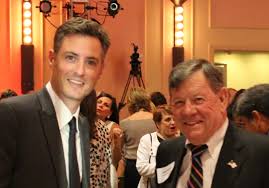
Jindal was convinced having White at the helm would be necessary for implementing his planned “signature” legislation for his second term: education reform. Grigsby, who viewed the laundry list of proposed changes as being an opportunity for his business buddies to start profiting from the tax dollars going into public education – as well as spanking the state’s teachers who would not give up their faith and support in unions – was only too happy to help.
He stated unequivocally that he was working to “inject free-market principles into the monopoly of public education.”
In an interview with NOLA.com in October 2011, Grigsby offered an example from his business experience as an illustration.
“When job seekers interview at Cajun Industries, we have to find out how many children they have. We’ve got to take the number of children, multiply it by $10,000 and add that to their salary so they can put their kids in private school.”
For that race, Grigsby started and funded the Alliance for Better Classrooms (ABC PAC), seeding it with $100,000, and getting Cajun Industries and its executives to kick in another $160,000 overall. It’s a process he repeated in 2015, with his own and company donations, and adding $100,000 more in his wife’s name. That was to ensure elected BESE members would “hold the line” on education reforms and John White’s job, no matter who the new governor turned out to be. (This PAC is still active, and presently has former LABI president Dan Juneau at the helm.)
In 2015, Grigsby also started and ran Empower Louisiana PAC, which funneled millions from Michael Bloomberg, the Waltons, Eli Broad and others into the BESE races, to purchase BESE and protect John White.
In 2016, Lane Grigsby started another PAC, called “Citizens for Judicial Excellence”, sharing the address of Cajun Industries. It’s purpose? To influence judicial races. In particular, it was aimed toward candidates who might ultimately be positioned to rule on the coastal lawsuits against the oil and gas industry. Grigsby personally contributed more than $280,000 to CJE, and the PAC spent $316,350 on a single attack ad in the Jimmy Genovese-Marilyn Castle state Supreme Court race. Genovese was the target, yet he won the race.
Altogether over the previous decade, Lane Grigsby has contributed more than $2-million of his personal money toward stirring the political pot in Louisiana. Cajun Industries has put in nearly a half-million more.
Thus far this election year, Grigsby has personally donated $75,000 to the Louisiana Conservative Majority PAC, formerly known as the Louisiana PAC for a Republican Majority. And while he gave $1,000 to John Bel Edwards’ campaign on April 1 (perhaps as a joke?), last month Lane Grigsby became the sole funder of a brand new PAC, Movement for Change, Inc, contributing $100,000.
While not listed as an officer, merely as the PAC’s only contributor, Grigsby’s money (more than $90,000 of it) has been used to buy air time on urban radio stations in New Orleans, Baton Rouge, Lafayette, Lake Charles, and Shreveport-Bossier City. The stated purpose of the expenditures, according to the Louisiana Ethics Commission filings, is “INDEPENDENT EXPENDITURE ADVERTISING/MEDIA BUY FOR GOVERNOR’S RACE.” The radio ads are not bashing the incumbent, Gov. John Bel Edwards, nor are they boosting Eddie Rispone. Instead, they are supporting Oscar Omar Dantzler, an African-American from Hammond. A registered Democrat, Dantzler is a school bus driver, who does lawns on the side.
Presumably, the intent is to drain some of the black Democratic vote away from Gov. Edwards, preventing him from achieving the 50-percent-plus-one needed to win the jungle primary outright. With some polls showing Rispone leading Ralph Abraham, that would — theoretically — lead to a runoff between Rispone and Edwards, and an opportunity for the Erector Set to throw even more money into the political arena.
There’s an old phrase that sums up that strategy: “more money than sense.”

Best. Advice. Ever.
It’s been just over 30 years since businessman Eddie Rispone received what he has termed “life-altering advice” from his dear friend and fellow construction mogul, Lane Grigsby.
Grigsby has himself called it “the best advice I ever gave anyone.”
What were these magical words?
“Liquidate all your stock and start your own business.”
The sanitized version of the story, offered as part of Rispone’s biography in his current run for Louisiana governor, says in the spring of 1988, Rispone was becoming increasingly dissatisfied with his quality of life. He’d been working for the same company, Matthews-McCracken-Rutland, also known as MMR Corporation, since 1975, and had risen to become its vice president, acquiring stock in the company when it went public in early 1987. Yet he had reached “a tipping point”, and Grigsby’s advice was the answer.
Rispone, then approaching age 40, sold off some 27,000 shares of MMR stock from April through July of 1988, resigned from MMR, and in early 1989 started ISC Constructors.
Perhaps it was truly as innocuous as a manifestation of mid-life crisis, coupled with sound advice from a trusted friend, resulting ultimately in solid business success.
Yet what is not mentioned now, in 2019, are the other things that were going on with Louisiana’s Erector Set – and Rispone’s world, in particular – in the late 1980s. Grigsby’s advice may have saved Rispone’s ass, helping keep his name and person out of a notorious federal court case developing at the same time.

In November 1988, the U.S. Justice Department indicted MMR, its former chairman Robert McCracken, and its president James “Pepper” Rutland on charges of bid-rigging the 1981 contract for building the second Big Cajun electric power plant in New Roads.
In May 1989, MMR and Rutland were convicted. All appeals were ultimately denied, and Rutland ended up serving six months in federal prison.
Rutland and Rispone – along with Art Favre, Performance Contractors’ CEO and Erector Set activist – were graduates of LSU’s inaugural Construction Technology class in 1972. In 1975, Rutland recruited Rispone to come to work for MMR.
MMR (then and now) does the same type of work Rispone’s ISC Constructors now specializes in – electrical construction and mechanical control planning and installation. By early 1980, MMR had built its business and reputation sufficiently to be included on the “invitation-only” bid list for construction of Big Cajun 2, a coal-fired electric power plant project in New Roads. MMR’s people met with electric company executives and drafted preliminary plans for the project.
But one of the national contracting firms on the bid list – Fischback and Moore, then the nation’s largest electrical contracting firm – was very much interested in getting the job themselves. According to court records, as was customary with several of the biggest national firms, “in March 1980, representatives of several large electrical contractors, including Fischbach and Moore, Inc., had a meeting at which they discussed allocating future electrical projects,” and agreed to submit higher bids so F&M would win the Cajun contract. The only thing standing in their way? That local upstart, MMR.
F&M’s southeast regional director Paul Murphy and that company’s New Orleans branch manager J.R. Sturgill arranged a meeting with MMR’s Robert McCracken and James Rutland. They met at the posh and private City Club in Baton Rouge, on December 19, 1980.
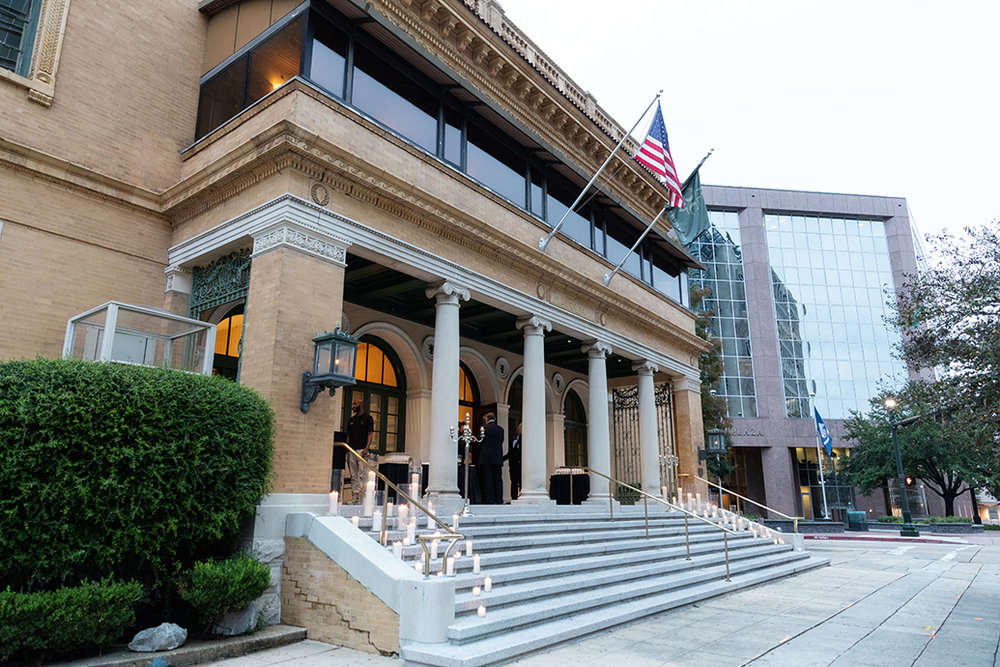
Murphy and Sturgill explained to the MMR executives that the other national firms had already agreed to let F&M be the low bid, and MMR needed to overbid, as well. McCracken and Rutland countered with an offer that MMR partner with F&M on the bid. But that wasn’t how the big boys played this game, and negotiations stalled. Murphy and Rutland took a breather.
Then, according to additional court records, “Murphy and Rutland announced, upon returning from the men’s room, that they had a deal.” In exchange for not bidding at all, MMR would be cut into F&M’s deal on Big Cajun, as a subcontractor. In addition to the money they’d earn for the work, MMR would get a $1.5-million “fee” as part of the “deal”.
Indeed, that’s how the deal to build Big Cajun Two went down – and how Rutland and MMR went down, causing Rispone (presumably) to worry in the late 80s about going down himself.
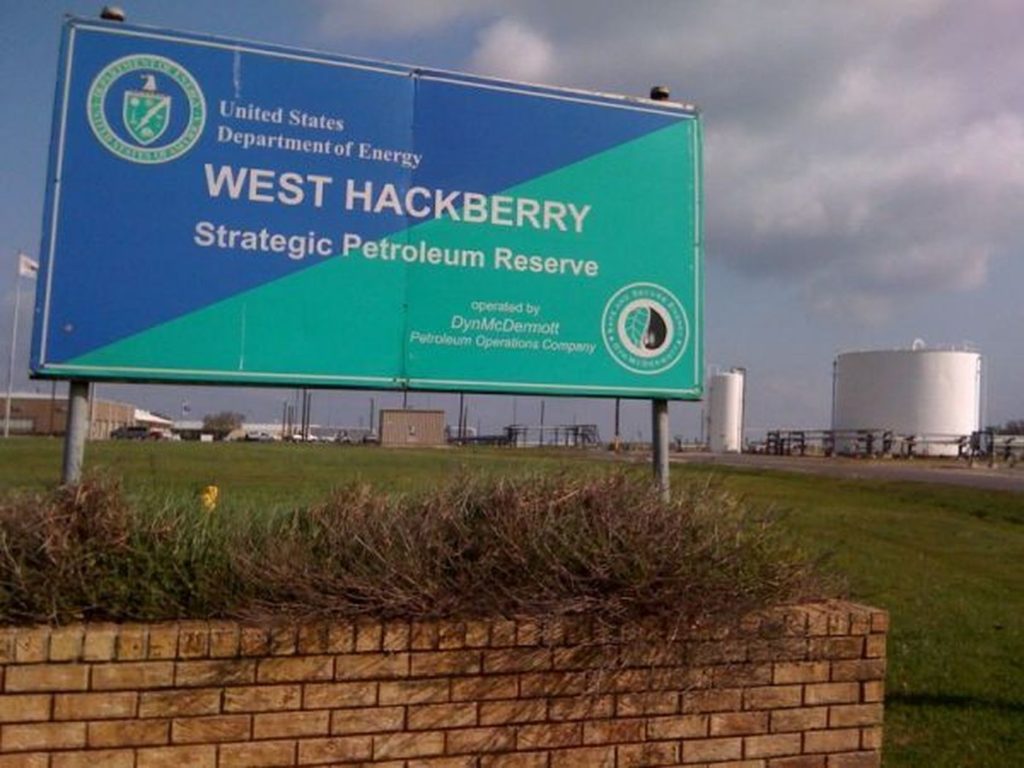
For just about the time Rispone began fidgeting about his future in the fall of 1987, the U.S. Justice Department issued subpoenas for MMR’s records regarding their dealings with Fischbach & Moore on Big Cajun, and a previous deal done with F&M at the Strategic Petroleum Reserves in Hackberry. At that point, F&M’s bid-rigging habits had become widely known through a series of well-publicized federal indictments and criminal cases across the country.
In June 1983, a federal grand jury in Seattle indicted Fischbach & Moore, the Howard P. Foley Co., and the Lord Electric Co. for conspiring to rig bids on four nuclear power plants in Washington state, and one in Indiana. In early July 1983, the same trio of companies was indicted by a federal grand jury in Pittsburgh, for conspiracy and bid-rigging on projects at eight U.S. Steel Corporation plants.
It is noted in the documents of the Pittsburgh case: “For approximately seven years, from 1974 to 1981, representatives of several electrical contracting companies met at the Duquesne Club in Pittsburgh. The purpose of these meetings was to decide among themselves which firm would receive the contract. That firm’s representative would contact the other contractors and would tell them what bid to submit, ensuring that his firm’s bid would be the lowest. Some of the firms kept track of the allocations to ensure that each contracting company received its fair share of work.”
And in August 1987, the U.S. Justice Department filed suit in Chattanooga, Tennessee, alleging Fischbach & Moore conspired with officials of Nebraska-based Commonwealth Electric Company to rig the 1980 bids on the Moccasin Bend waste treatment plant in Chattanooga. F&M’s Paul Murphy was also named in that case.

Convicted, and appeals denied, James “Pepper” Rutland served his six months, paid his federal fines, and once MMR had reorganized under Chapter 11 bankruptcy in 1990, resumed the position of CEO of the company, now known as MMR Constructors. Inc.
MMR Constructors headquarters is on Airline Highway in Baton Rouge, next door to Grigsby’s Cajun Industries HQ.
With the exception of Securities and Exchange Commission filings showing Eddie Rispone selling 27,000 of the 108,000 shares of MMR stock he owned in 1988, none of the federal documents currently available mention Rispone in connection with either MMR or the criminal cases.
He was, however, a company executive at the time, and undoubtedly supervised the Big Cajun and Strategic Petroleum Reserve projects, even if he was not the one designing and crunching the numbers of the bids and contracts.
There is something from the many court documents in the MMR case that stands out as food for thought now, thirty years later.
“At the sentencing hearing, Judge Mentz stated that he could not view the conspiracy for the Big Cajun bid in isolation, because the testimony adduced at trial showed that Murphy and Rutland had worked together to rig previous bids. He noted that MMR had earned a sizable profit as a result of its agreement with F & M, and that ‘apparently these deals were one of the reasons that MMR became so successful over the years’.”
What did Eddie know in the 80s? Did Grigsby’s advice save Rispone’s reputation and his ass?
We may never know.
How much influence and control will Grigsby have in state government IF Eddie Rispone wins the race?
Do you really WANT to know?
